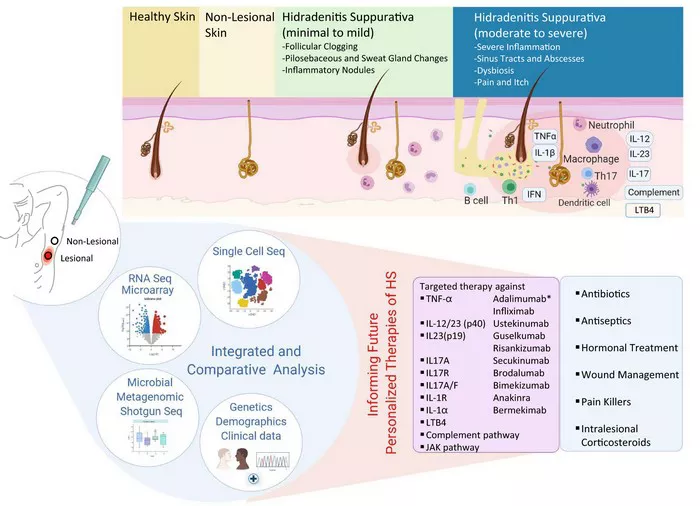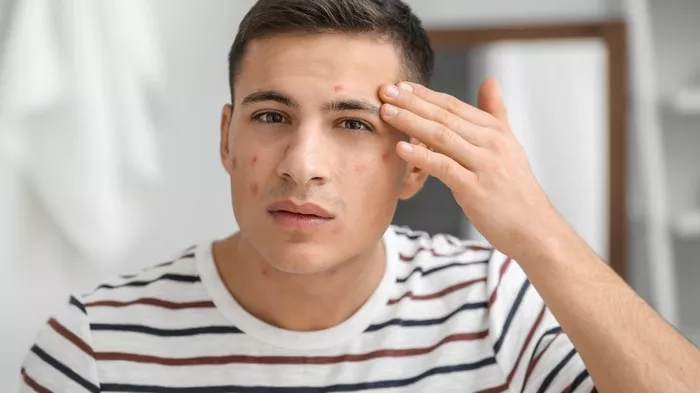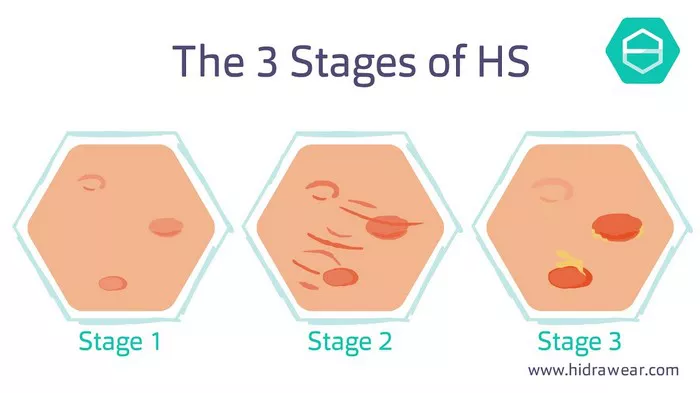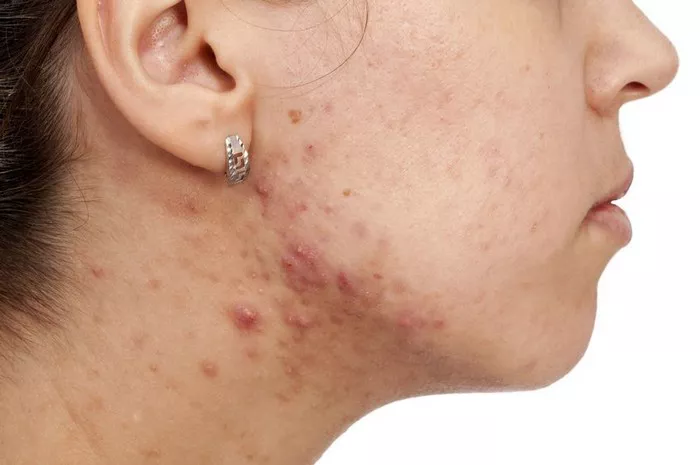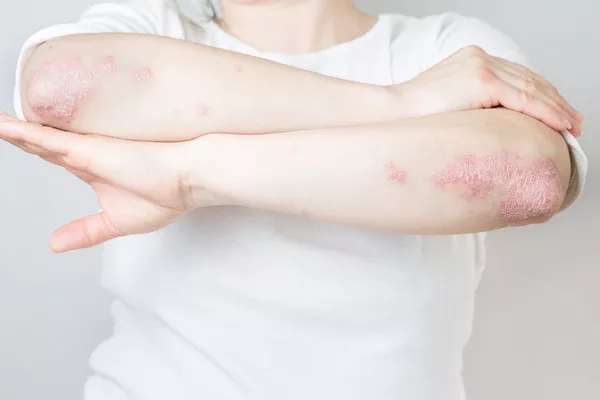Hidradenitis Suppurativa (HS) is a chronic skin condition that affects many people worldwide. It can cause significant discomfort and impact daily life. Understanding HS is essential for managing its symptoms effectively. This article will provide detailed information about HS, including its causes, symptoms, diagnosis, treatment options, and coping strategies.
What Is Hidradenitis Suppurativa?
Hidradenitis Suppurativa is a long-term skin condition characterized by the formation of painful lumps, abscesses, and tunnels under the skin. These lesions typically occur in areas where skin rubs together, such as the armpits, groin, and under the breasts. HS can be mistaken for other skin conditions, which can lead to delays in diagnosis and treatment.
History and Naming
The term “hidradenitis” comes from the Greek words for “sweat gland” and “inflammation.” It was first described in medical literature in the 18th century. HS is also known as acne inversa because it often resembles acne but occurs in skin folds rather than on the face or back.
Causes of Hidradenitis Suppurativa
The exact cause of HS is not fully understood. However, several factors contribute to its development:
Genetics
There is evidence that HS can run in families. Genetic predisposition may play a role, with certain genes being associated with the condition.
Immune System Dysfunction
HS is thought to be linked to an overactive immune response. This means the body may mistakenly attack its own skin, leading to inflammation and lesions.
Hormonal Factors
Hormones may influence HS. Many individuals notice flare-ups around their menstrual cycle, suggesting a connection between hormones and skin health.
Environmental Triggers
Certain environmental factors may trigger or worsen HS. These include:
Obesity: Excess weight can cause friction in skin folds, leading to increased irritation and inflammation.
Smoking: Tobacco use has been linked to a higher incidence of HS. Quitting smoking may help reduce symptoms.
Stress: Emotional stress can exacerbate HS flare-ups.
SEE ALSO: How Do I Know If I Have Hidradenitis Suppurativa (HS)?
Symptoms of Hidradenitis Suppurativa
The symptoms of HS can vary in severity. Common symptoms include:
Painful Bumps
The most noticeable symptom is the presence of painful lumps under the skin. These bumps can vary in size and may appear red or swollen.
Abscesses and Draining Pus
As the condition progresses, the bumps may turn into abscesses that can burst and drain pus. This can lead to discomfort and increased risk of infection.
Foul Odor
The draining pus can have a strong, unpleasant smell, which can be distressing for those affected.
Tunnels Under the Skin
In chronic cases, HS can create tunnels or sinus tracts under the skin. These can lead to scarring and skin changes over time.
Recurring Flare-Ups
HS is characterized by recurring episodes of flare-ups. These can be triggered by various factors, leading to cycles of inflammation and healing.
Diagnosis of Hidradenitis Suppurativa
Diagnosing HS can be challenging. Many healthcare providers may confuse it with other skin conditions. The diagnosis typically involves:
Physical Examination
A healthcare professional will examine the affected areas of the skin. They will look for characteristic symptoms, such as painful lumps, abscesses, and tunnels.
Medical History
The doctor will ask about the patient’s medical history, including any family history of HS and other skin conditions. They may also inquire about triggers and symptoms.
Imaging Tests
In some cases, imaging tests like ultrasound may be used to assess the extent of the condition and identify any underlying issues.
Treatment Options for Hidradenitis Suppurativa
While there is no cure for HS, various treatment options can help manage symptoms and reduce flare-ups. Treatment plans are often personalized based on the severity of the condition.
Lifestyle Modifications
Weight Management: Losing weight can help reduce friction in skin folds and decrease the frequency of flare-ups.
Quitting Smoking: Stopping tobacco use can improve skin health and overall well-being.
Stress Management: Techniques like yoga, meditation, and therapy can help reduce stress levels.
Medications
Several medications can help manage HS symptoms:
Topical Treatments: Corticosteroid creams or ointments can reduce inflammation and pain in mild cases.
Antibiotics: Oral or topical antibiotics can help manage infections associated with HS lesions.
Hormonal Therapy: For some individuals, hormonal treatments may help reduce flare-ups.
Immunosuppressants: Medications that suppress the immune system can help control inflammation.
Biologic Treatments: Newer biologic drugs target specific pathways in the immune response and can be effective for moderate to severe HS.
Surgical Options
In severe cases of HS, surgical intervention may be necessary. Surgical options include:
Incision and Drainage: This procedure can relieve pain and allow the pus to drain from abscesses.
Excision: For extensive scarring or recurrent lesions, excision of affected skin may be recommended.
Laser Therapy: Some patients may benefit from laser treatments that can reduce symptoms and improve skin appearance.
Living with Hidradenitis Suppurativa
Living with HS can be challenging. The condition can affect physical and emotional well-being. Here are some coping strategies:
Support Networks
Connecting with support groups or communities can provide encouragement and understanding. Sharing experiences with others who have HS can help individuals feel less isolated.
Educating Yourself
Learning about HS can empower patients to make informed decisions about their treatment and care. Knowledge can help reduce fear and anxiety associated with the condition.
Skin Care Routine
Developing a gentle skin care routine is essential. Avoiding harsh products and keeping the skin clean and dry can help reduce irritation and prevent flare-ups.
Communicating with Healthcare Providers
Open communication with healthcare providers is crucial. Patients should feel comfortable discussing symptoms, concerns, and treatment options.
Conclusion
Hidradenitis Suppurativa is a complex skin condition that can significantly impact a person’s quality of life. Understanding the causes, symptoms, and treatment options is vital for effective management. With the right approach, individuals with HS can lead fulfilling lives despite the challenges they face. If you suspect you have HS, consult a healthcare professional for an accurate diagnosis and personalized treatment plan.

